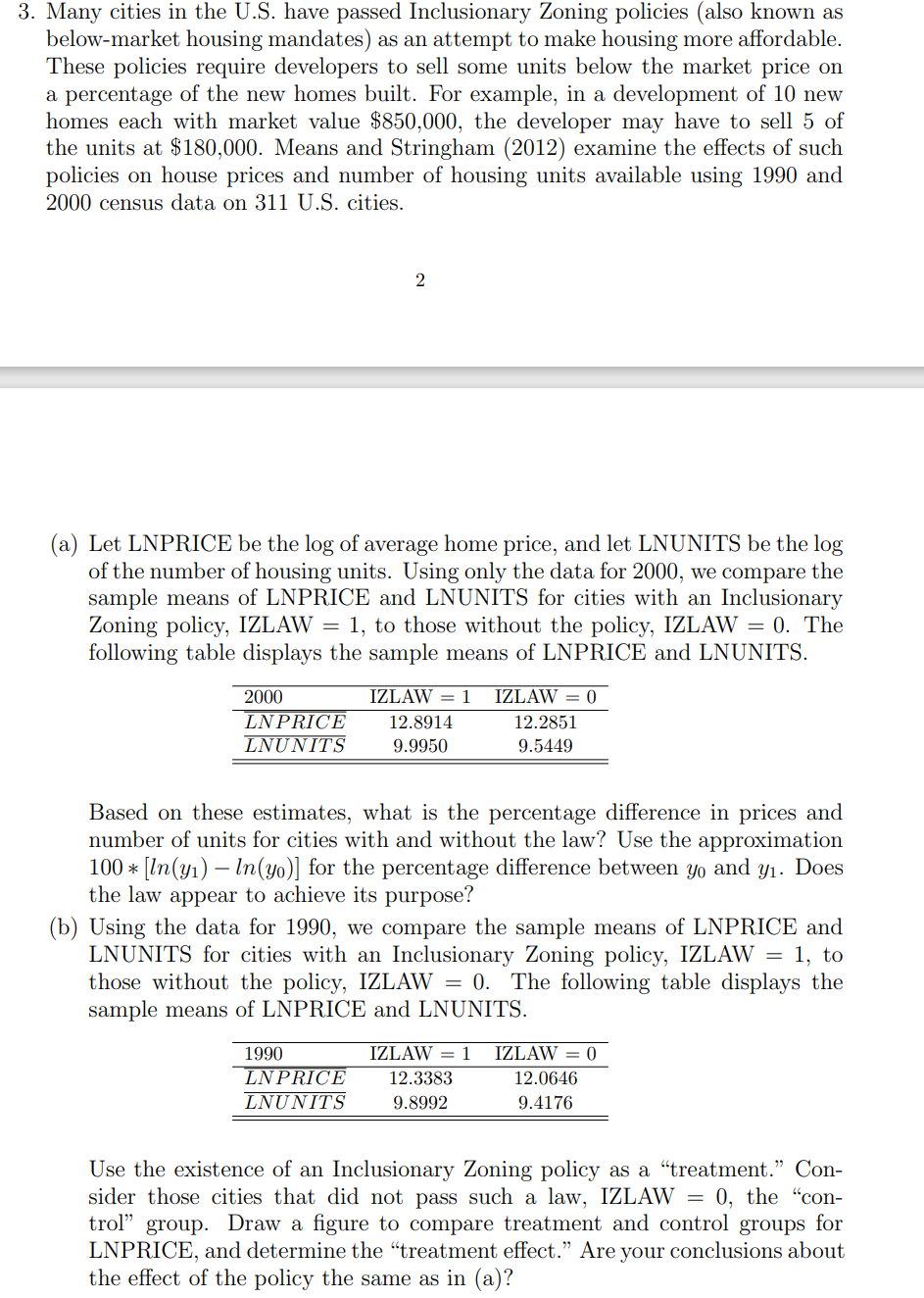Answered step by step
Verified Expert Solution
Question
1 Approved Answer
3. Many cities in the U.S. have passed Inclusionary Zoning policies (also known as below-market housing mandates) as an attempt to make housing more

3. Many cities in the U.S. have passed Inclusionary Zoning policies (also known as below-market housing mandates) as an attempt to make housing more affordable. These policies require developers to sell some units below the market price on a percentage of the new homes built. For example, in a development of 10 new homes each with market value $850,000, the developer may have to sell 5 of the units at $180,000. Means and Stringham (2012) examine the effects of such policies on house prices and number of housing units available using 1990 and 2000 census data on 311 U.S. cities. (a) Let LNPRICE be the log of average home price, and let LNUNITS be the log of the number of housing units. Using only the data for 2000, we compare the sample means of LNPRICE and LNUNITS for cities with an Inclusionary Zoning policy, IZLAW = 1, to those without the policy, IZLAW = 0. The following table displays the sample means of LNPRICE and LNUNITS. 2000 LNPRICE LNUNITS 2 IZLAW = 1 IZLAW = 0 12.8914 12.2851 9.9950 9.5449 Based on these estimates, what is the percentage difference in prices and number of units for cities with and without the law? Use the approximation 100 * [In(y) In (yo)] for the percentage difference between yo and y. Does the law appear to achieve its purpose? 1990 LN PRICE LNUNITS (b) Using the data for 1990, we compare the sample means of LNPRICE and LNUNITS for cities with an Inclusionary Zoning policy, IZLAW = 1, to those without the policy, IZLAW = 0. The following table displays the sample means of LNPRICE and LNUNITS. IZLAW = 1 IZLAW = 0 12.3383 12.0646 9.8992 9.4176 Use the existence of an Inclusionary Zoning policy as a "treatment." Con- sider those cities that did not pass such a law, IZLAW = 0, the "con- trol" group. Draw a figure to compare treatment and control groups for LNPRICE, and determine the "treatment effect." Are your conclusions about the effect of the policy the same as in (a)?
Step by Step Solution
There are 3 Steps involved in it
Step: 1
Analyzing the Effects of Inclusionary Zoning Policy a Percentage Difference in Prices and Units 2000 Data Price Difference Apply the formula100 ln1289...
Get Instant Access to Expert-Tailored Solutions
See step-by-step solutions with expert insights and AI powered tools for academic success
Step: 2

Step: 3

Ace Your Homework with AI
Get the answers you need in no time with our AI-driven, step-by-step assistance
Get Started


